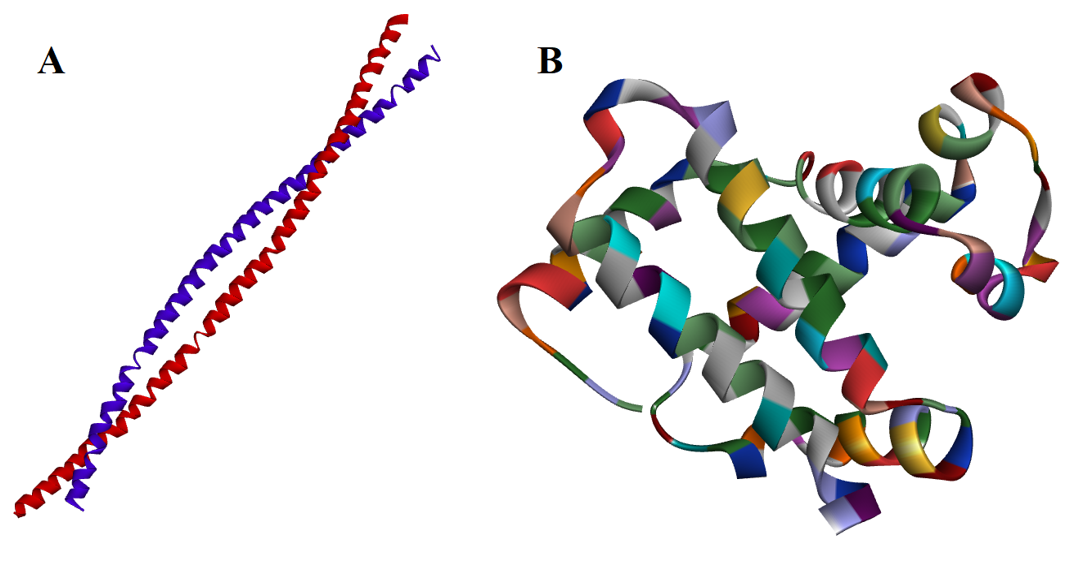Classification of Proteins
Classification of Proteins
Proteins are classified on the basis of their composition, shape, and function. According to physicochemical properties, proteins are classified as simple proteins and conjugated proteins.
Simple Proteins:
Simple proteins are naturally occurring proteins. Upon hydrolysis simple proteins produce only amino acids. Following are some types of simple proteins.
- a) Globulins:
Examples: Myosin, Lactoglobulin, Ovoglobulin, Serum globulin and Legumin
- b) Albumins:
Examples: Lactalbumin, Ovalbumin, Serum albumin and Legumelin
- c) Prolamins:
Examples: Zein of maize and Gliadin of wheat
- d) Globins:
- e) Histones:
Conjugated or Compound Proteins:
Conjugated proteins are present in nature in combination with prosthetic groups. Prosthetic groups are non-protein compounds like sugars, lipids, nucleic acids etc. These proteins are classified on the basis of prosthetic groups. Some types are discussed below.
- a) Glycoproteins:
- b) Phosphoproteins:
Examples: Casein (milk) and Vitellin (egg Yolk)
- c) Nucleoproteins:
Examples: Chromosomes and Ribosomes
- d) Lipoproteins:
- e) Metalloproteins:
Examples: Carbonic anhydrase (Zinc), Ferritin (Iron), and Ceruloplasmin (Copper)
- f) Chromoproteins:
Examples: Hemoglobin (Heme has red color), Flavoproteins (riboflavin has yellow color)
Proteins are also classified according to their functions. Following are some functional classes of proteins.
- a) Structural Proteins:
Examples: Keratin (forms hair, nails, skin) Elastin (provide stretchiness to tissues), and Collagen (found in tendons, skin, bones, and cartilages)
- b) Catalytic Proteins:
Examples: Lyases (breaks bonds by means other than oxidation and hydrolysis), Ligases (joins to molecules), Isomerases (catalyzes isomerization reactions)
- c) Transport Proteins:
Examples: Transferrin (transports iron), Hemoglobin (O2 gas carrier)
- d) Regulatory Proteins:
Examples: Insulin (controls the amount of glucose in blood), Growth hormones
- e) Storage Proteins:
Examples: Ovalbumin (egg white), Casein (milk)
- f) Contractile Proteins:
Examples: Actin and Myosin
- g) Immune Proteins:
Examples: Cytokines (develops communication between immune cells), Immunoglobulins (act as antibodies)
Proteins are also classified on the basis of their shape and molecular length.
- a) Globular Proteins:
These proteins have irregular amino acid sequences. These are functional proteins, enzymes and transport proteins belonging to this class. These proteins are mostly water soluble and are sensitive to pH change and heat. Examples include catalase, insulin, and hemoglobin.
- b) Fibrous Proteins:

